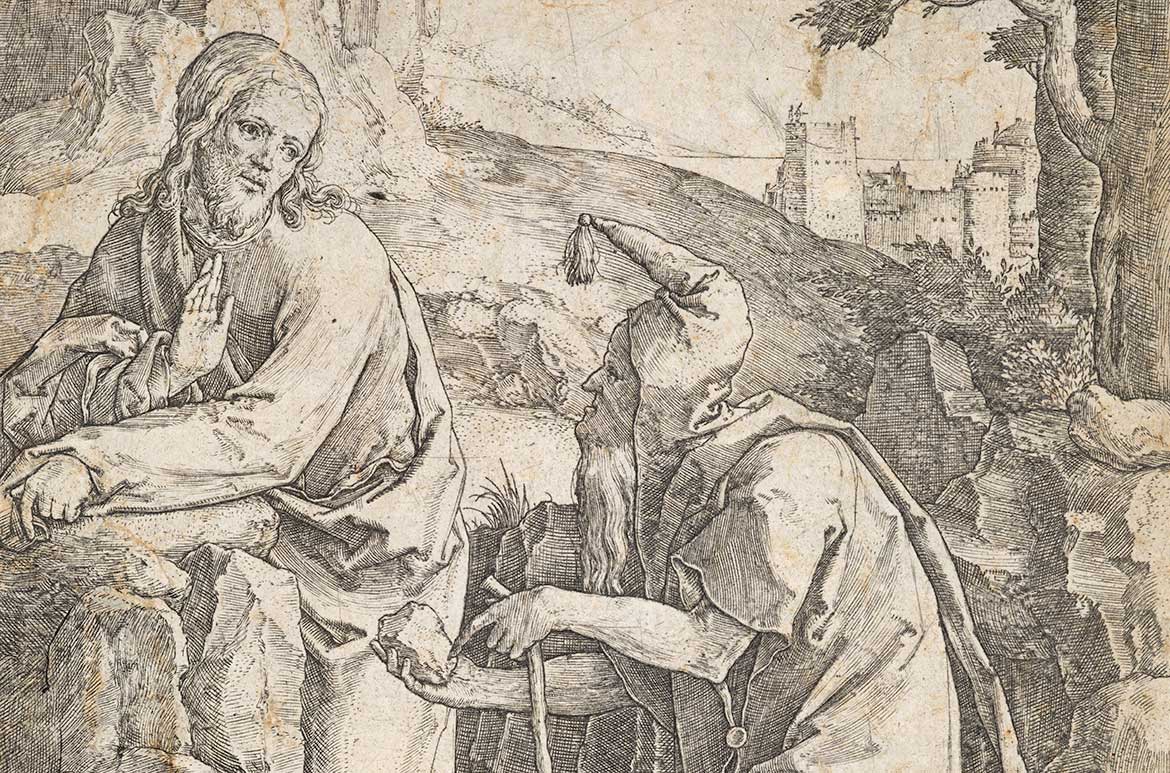Masters of the fifteenth century, such as Lucas van Leyden and Heinrich Aldegrever, transformed printmaking into a refined art form and have influenced artists for centuries.
The Gallery’s historical international holdings of Old Master prints comprised of etchings, woodcuts and engravings by artist–printmakers from the fifteenth to the eighteenth centuries includes works by Lucas van Leyden (1494–1533), Anthonie Waterloo (c.1610–90), Heinrich Aldegrever (1502–c.1561), Pieter Jansz Saenredam (1597–1665), Jan Both (c.1610-18 – 1652), Abraham Bosse (c.1602–76) and Salvator Rosa (1615–73). They vary in theme, size and quality of impression, and range across biblical, allegorical and genre subjects.
These works complement our ‘Apocalypse’ series by Albrecht Dürer, an illustrated volume of ‘The Book of the Revelation of St John’, with its predictions of agony and turmoil on the day of Last Judgement.
Albrecht Dürer ‘Apocalypse’ series
Albrecht Dürer, Germany 1471-1528 / ‘The Apocalypse’ series c.1496-98, Latin edition, 1511 / Woodcut on laid paper / Purchased with the generous support of Mrs Selina Rivers, the Airey Family, Margaret Mittelheuser AM and Cathryn Mittelheuser AM, Josephine Ulrick and Win Schubert Diversity Foundation / Collection: Queensland Art Gallery | Gallery of Modern Art
Heinrich Aldegrever ‘Hercules Slaying the Dragon Ladon’ 1550

During the fifteenth century, at a time when paper became more widely available, artists such as Lucas van Leyden and Heinrich Aldegrever transformed the craft of printmaking from secondary artisan status to a refined and widely recognised art form. Aldegrever was a follower and admirer of Dürer, whose style is evident in Aldegrever’s prints of biblical, mythological and allegorical themes. Italian and Netherlandish Renaissance art also influenced his work.
Hercules Slaying the Dragon Ladon (from ‘The Labours of Hercules’) 1550 depicts one of the most popular themes in Renaissance art; a cycle of stories deriving from a Greek epic poem composed by Peisander around 600BCE, ‘The Labours of Hercules’ describes the 12 tasks demanded of Hercules by the Mycenaean King, Eurystheus, as atonement for the slaying of his daughter, son and wife. The dragon, Ladon, was the guardian of the golden apples in the Garden of Hesperides, the stealing of which was set as the eleventh labour.
Because of the small scale of his prints, Aldegrever is known as one of the Kleinmeister (‘Little Masters’) — printmakers working primarily in engraving, who were active in the first half of the sixteenth century and specialised in small, finely detailed prints, some no larger than a postage stamp.
Lucas Van Leyden ‘The Last Supper’ 1521

Lucas Van Leyden ‘David in Prayer’ 1520
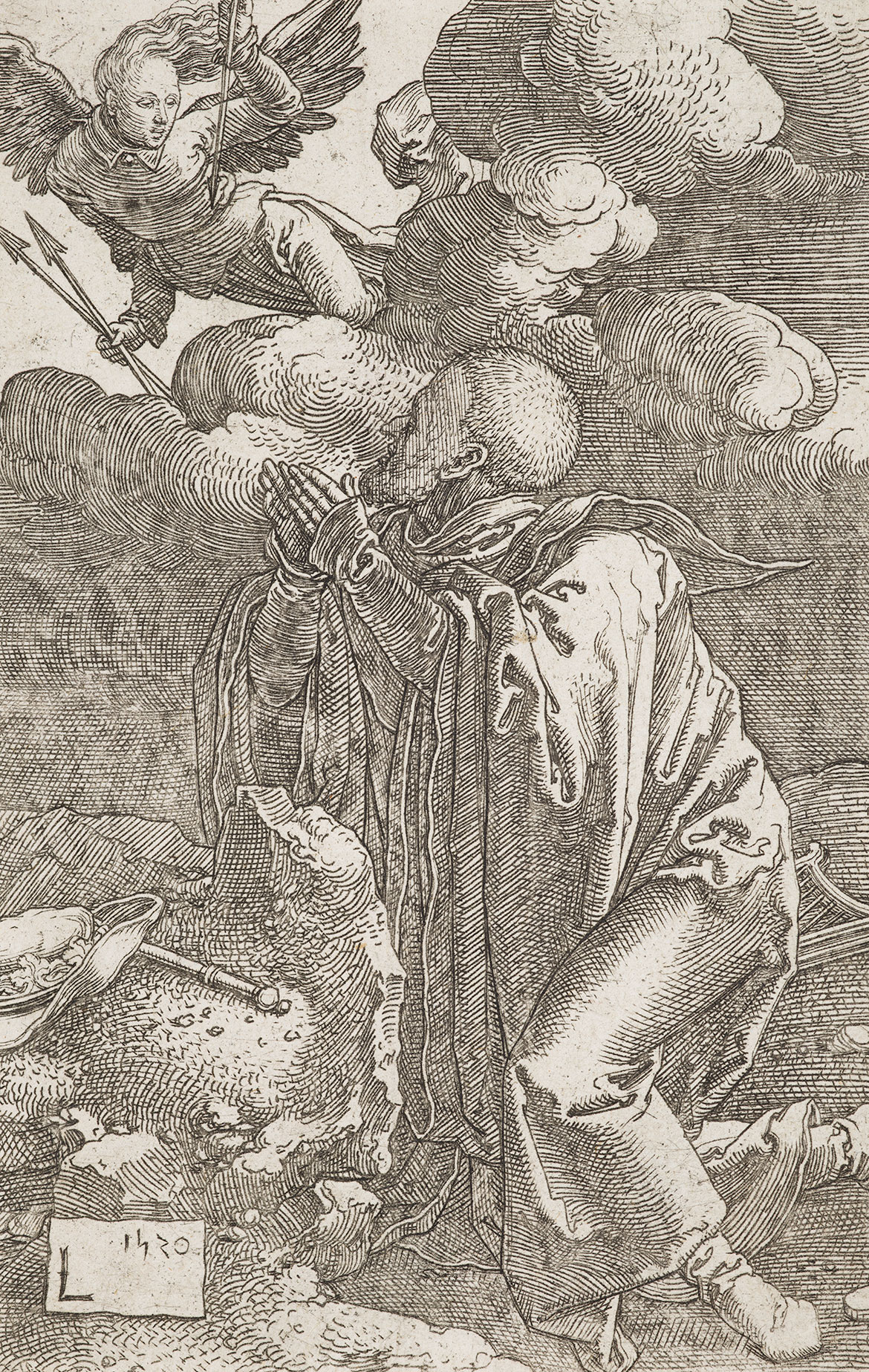
Lucas Van Leyden ‘The Temptation of Christ’ 1518

By the 1520s, the Netherlands came to be recognised for its printmakers, who had actively developed the art to a new level of sophistication, and van Leyden was foremost among these. The first printmaker to etch on copper plates, which allowed for greater freedom of draughtsmanship than the previous iron plates, van Leyden’s diversity and variation in line and the atmospheric modelling of light and shade were his work’s most notable qualities. While simple woodcut techniques had been in use since the mid 1400s for devotional images and emblem books (Dürer developed the technique to an unprecedented degree), a more technically complex and demanding technique of engraving developed in the later decades of the fifteenth century.
The tools and techniques of engraving were adapted from those used for incising armoury and metalwork. Known as intaglio processes, engraving and etching both employ a metal plate as the matrix; the image is incised into the plate by mechanical action and the use of a pointed metal tool (a burin) in the case of engraving, or through the mordant effects of acid for etching. The major point of departure from woodcut techniques is the ability of intaglio processes to produce tonal variation and chiaroscuro effects in lighting. The intricate detail and effects achieved by these methods resulted in the level of realism found in panel painting and altarpieces of the period.
Anthonie Waterloo ‘Landscape with Pan and Syrinx’ 1640–90
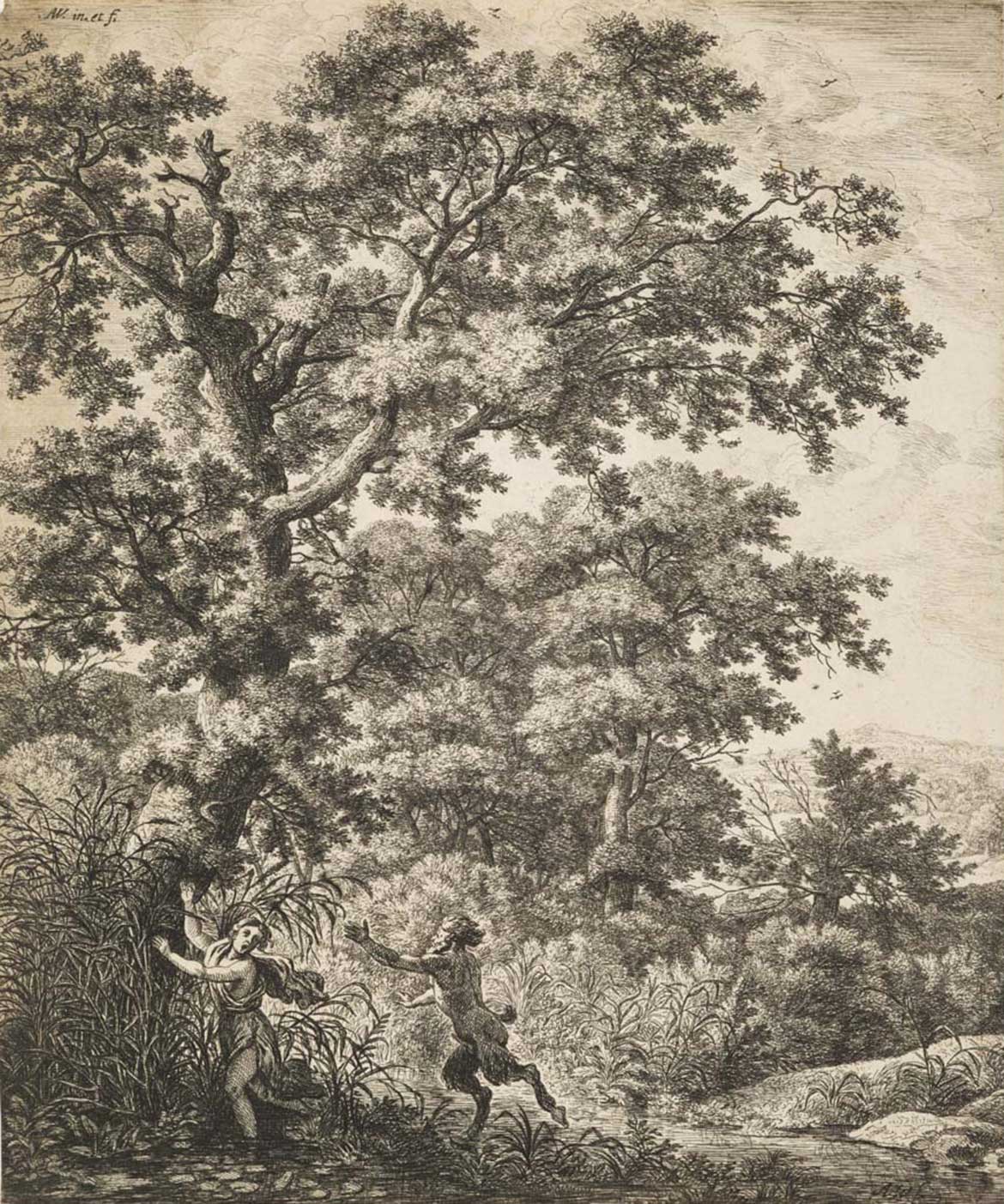
Jacob van Ruisdael ‘Cottage on the summit of a tree covered hill’ c.1649
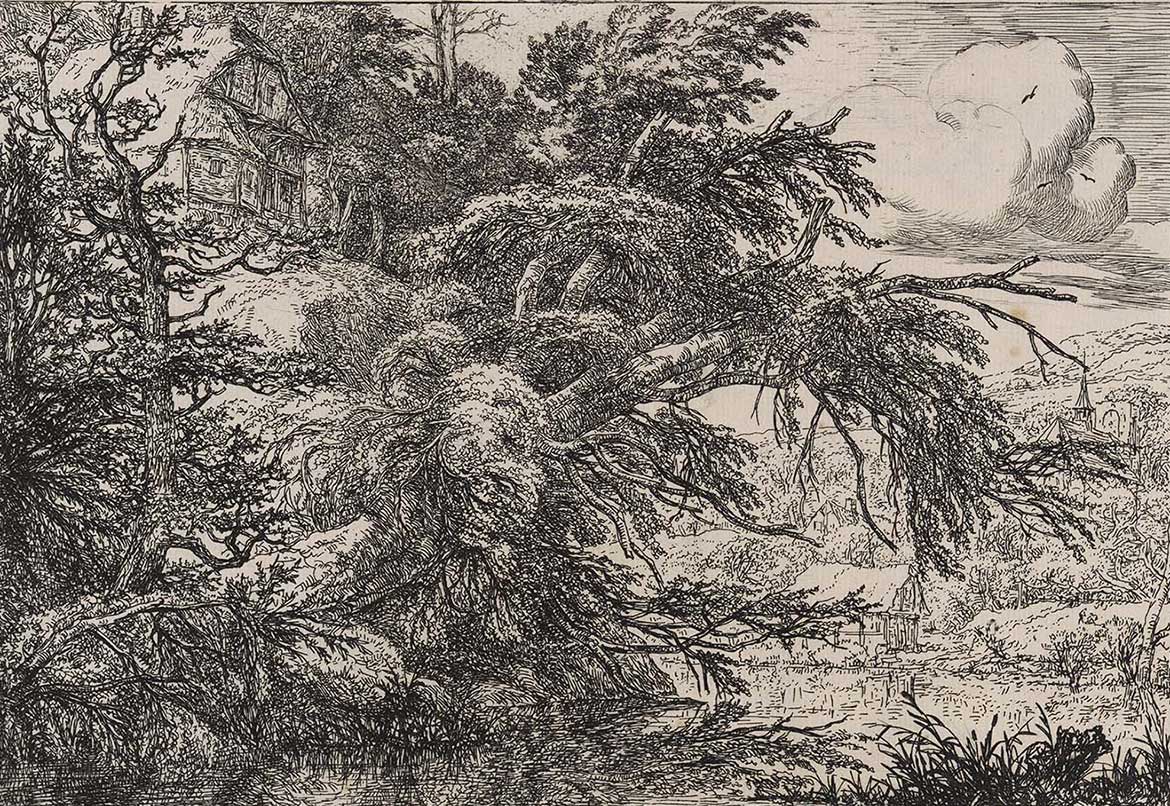
Anthonie Waterloo’s reputation as a landscape artist was based largely on his drawings and etchings, which had considerable influence on subsequent generations of artists, including the French Barbizon School of the mid-nineteenth century. Although Waterloo travelled widely, many of his landscapes were probably imagined in the studio and were strongly influenced by the work of landscapists like Jacob van Ruisdael. Landscape with Pan and Syrinx 1640–90 comes from a series of six landscapes depicting mythological scenes from Ovid’s ‘Metamorphoses’.
David Burnett is former Curator, International Art, QAGOMA
Jan Saenredam ‘The Expulsion from Eden’ 1604
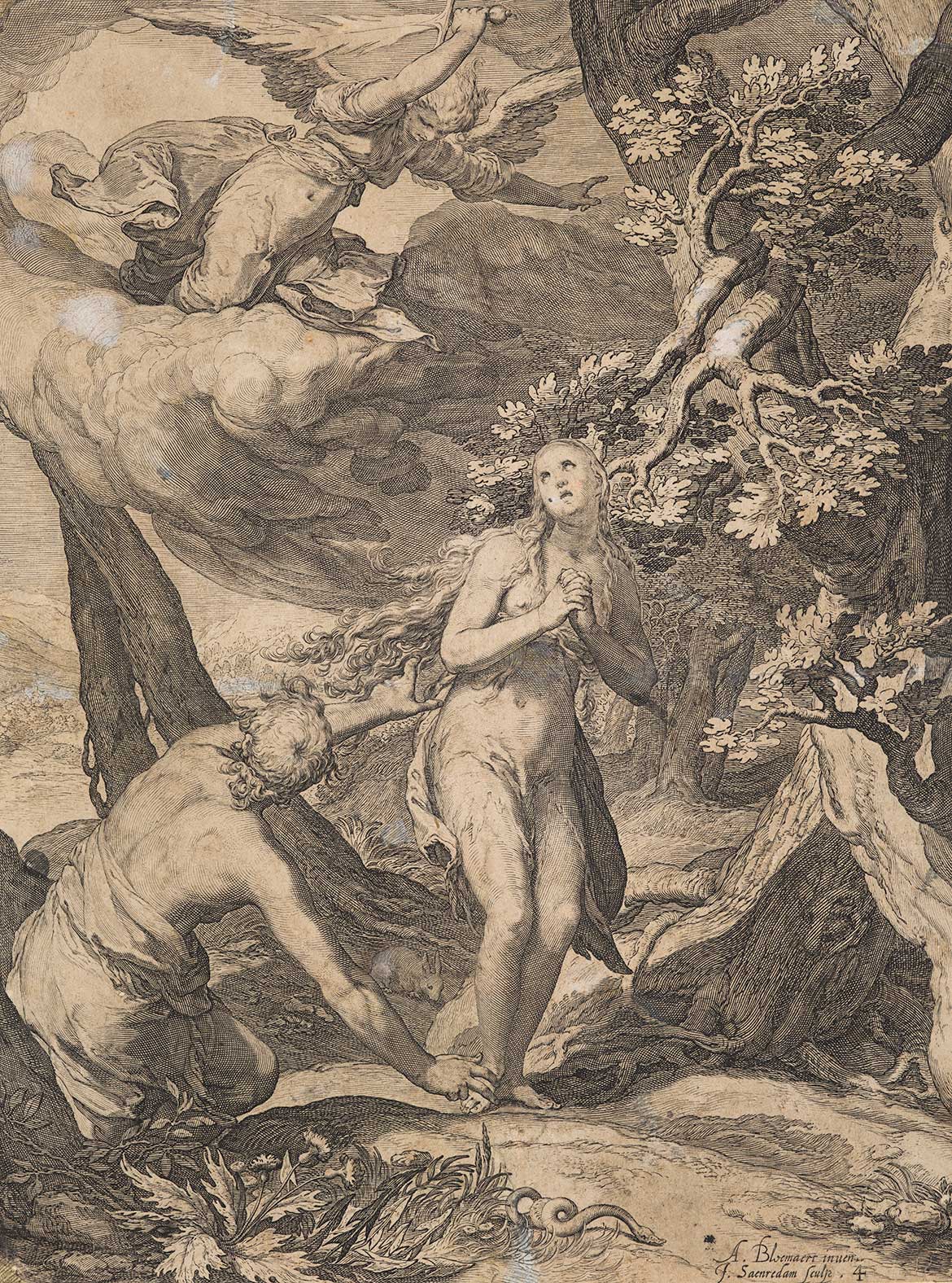
#QAGOMA
